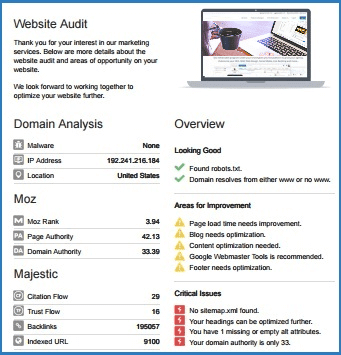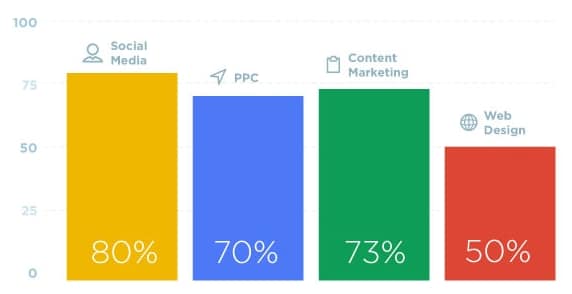“Content is king”. It’s a phrase that everyone in the digital marketing industry has come to embrace. You can’t succeed in SEO without quality content, and content will not be effective if you’re not implementing the right SEO strategy.
Clients see content in a different way, though. While you know the value of producing quality content by heart, some clients merely see content as a way to promote their business. And that’s the challenge: convincing clients to dive into your content marketing. Part of your work as an agency is to explain the importance of content marketing and how it can be so much more than just publishing blogs for the sake of making a brand visible online.
I’ll show you how to fit your content marketing in your SEO so you can develop a more effective strategy the next time you talk to clients. Here’s what you’ll learn from this blog:
- Analyzing Content Marketing Trends
- Re-introducing the Value of Content Marketing
- Creating a Fusion of Your SEO and Content Strategy
Analyzing Content Marketing Trends
Why is it important to keep up with content marketing trends? The answer is simple: you want to make sure your clients are getting the right audience for every piece of content you produce. Otherwise, you’re going at it blind.
We asked some of our partners about the type of content that helps them gather leads for their clients, and this is what they shared:
Survey: What type of content gathers the most leads?
From the survey, we can infer that users are more likely to consume content that is concise, informational, and up-to-date. Content formats that are easy to skim are also attracting more traffic, as news and videos have a higher percentage compared to long-form guest posts and website blogs. Taking the reading and browsing habits of users into account, focus on creating digestible, easy-to-skim content to retain the attention of your client’s target audience.
Re-Introducing the Value of Content Marketing
We’ve surveyed some of our partners to find out what type of service they offer along with their SEO:
Survey: What type of service do you offer with SEO?
Content marketing is second to social media, but according to our partners, clients are more likely to get web design and PPC. The question behind this is, “How many businesses are willing to invest in content marketing?” According to CMI, B2C companies allocate 32% of their overall marketing budget to content marketing. 50% of B2C companies also plan to increase their content marketing budget in the next 12 months.
The main challenge here is taking clients on the road to data-driven content marketing. If you fall short on this, your client will likely stop at the basics of content marketing and your efforts of getting more results from content creation will be futile.
Here’s one from my experience: I was working with a partner who had a hard time re-introducing content marketing to a client because the client prefers to stick to old-style content marketing. It took all the sales training I had and my knowledge of the industry to help the partner win the client over. In the end, it’s about showing, not telling:
- Showing that your content strategy works – Your trump card when convincing clients is showing a result-oriented content marketing strategy. Don’t just throw them some stats or send a whitepaper; pull as much data as you can from the previous campaigns you handled and walk them through the strategy.
- Showing “how” your content strategy works – At this stage, we’re done with the “why content marketing is important”. It’s about how content marketing fits into their overall digital marketing goals. What type of content will you provide for their SEO strategy? Do you have a content calendar for the campaign’s duration? This will provide your clients with a clearer view of how the content strategy supports their business.
- Showing the metrics that matter – One thing that separates successful agencies from the rest is how they stay on top of their mind when it comes to touch points and metrics. Content quantity and quality matter, but how will your client know if your strategy is effective? Page views are just the starting point of measuring your content strategy success; blog subscriptions, comments, form completions, and online transactions are metrics that you need to be keeping an eye on as well.
When you’re convincing clients about the value of content marketing, keep this in mind: Your goal is not just to provide them with quality content, but to help them make business with quality content.
Creating a Fusion of Your SEO and Content Strategy
Let’s go back to the main question: How do you fit content in your SEO strategy?
The biggest mistake that agencies often make is they implement SEO and content on different planes.
Let’s be honest, there were times when you have to argue over implementing new content over SEO changes, and vice versa. This doesn’t have to be the case, though.
It will all boil down to implementing the right SEO practices to make sure your content is performing.
The digital landscape is moving towards a shared plane where SEO and content marketing should be aligned. You’re not just giving a one-off strategy for your client—it’s a fusion of both planes to provide a long-term solution. It will all boil down to implementing the right SEO practices to make sure your content is performing.
Here’s a couple of tips to have a successful content and SEO fusion strategy:
1. Set a benchmark for your client’s SEO performance
Your content and SEO strategy will depend on the benchmark you’ve set. This help you determine if your client’s goals are going towards the right direction and if they are progressing as you work on their content and SEO. For successful content and SEO integration, you need to benchmark the following values:
- Page views – If your client is getting less than 250 page views per day by the end of your first campaign, there’s something wrong with how you’re implementing your SEO and content strategy.
- Competition — It’s important to know who you’re up against. If you’re targeting a keyword and topic against a big competitor (let’s say Amazon or Forbes), you should re-think your strategy.
- CTR – Are your pages getting enough traction? The click-through rate of your client’s website can reflect the SEO and content implementation you’re doing.
- Session duration – How do you know if your client’s website content is engaging enough to their target audience? Longer sessions mean more engaged visitors.
2. Audit and improve.

When you run a white label SEO campaign with us, we provide you access to our free site audit tool that shows you the areas in your site that need improvement. Our site audit shows if your client’s website content is optimized, as well as the keywords present in the content and their density.
With our website audit, you can:
- Check the quality of the content.
- Look for areas of opportunities to improve website content optimization.
- Target the right keywords.
Adding value to your content and SEO strategy can make a big difference in your digital efforts. If you start with the right foot on your content creation and fuse it with your SEO practices, you can get more than just a strong online presence, but conversions that add to your client’s business.
If you want a solid strategy fueled by proven SEO methodologies and quality content marketing, call our toll free hotline at 1-800-250-6106. We’ll show you how our strategies are expanding the potential of digital agencies and changing businesses for the better.




